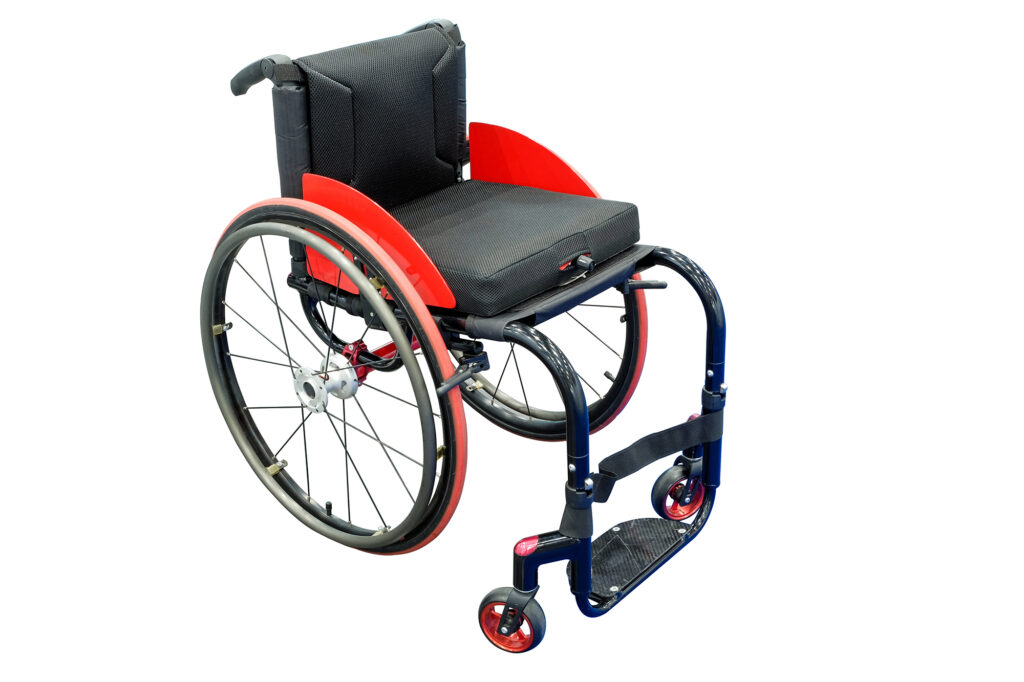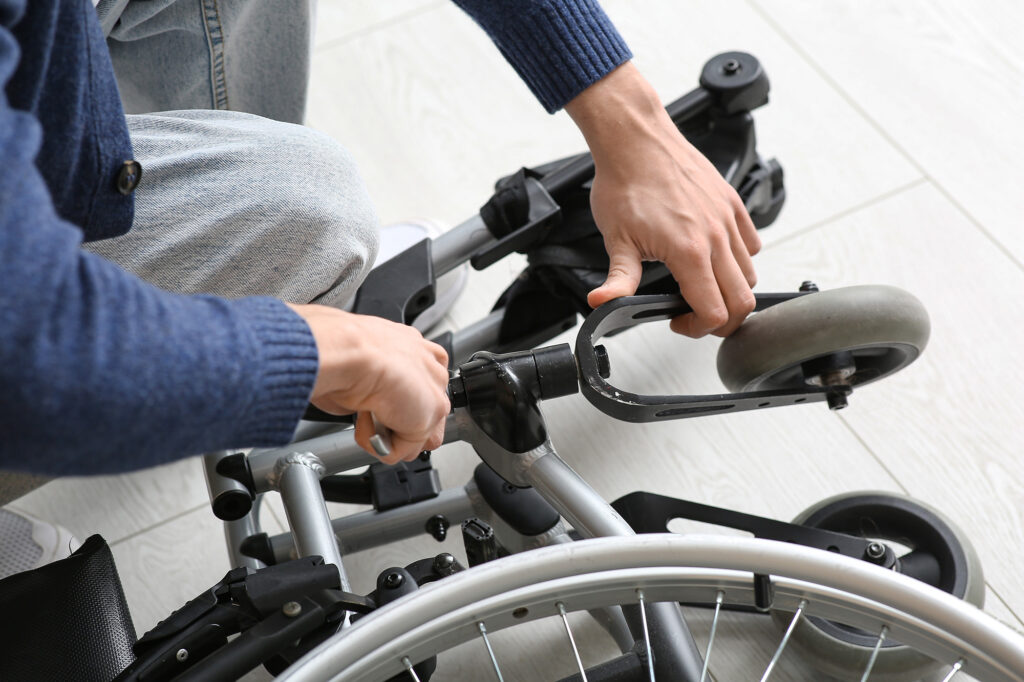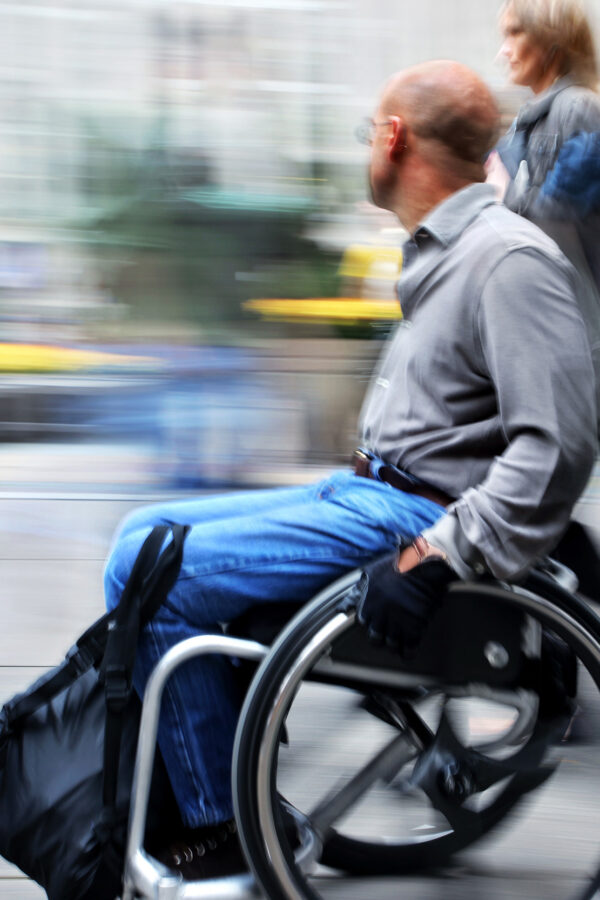
Understanding Your Legal Rights as a Wheelchair User
Wheelchair users face unique challenges and often rely on legal protections to ensure their rights to access, safety, and freedom from discrimination. Laws exist to safeguard wheelchair users across various areas, including public spaces, housing, employment, transportation, and healthcare. Knowing these rights empowers wheelchair users to take action if they encounter obstacles or discrimination. This comprehensive guide outlines key legal rights, explains when to seek legal support, and details steps to take if your rights are violated.
Product Liability for Wheelchairs and Medical Equipment
Wheelchair users rely heavily on their equipment for mobility, independence, and safety. However, when wheelchairs or related medical devices are defective, they can cause serious injuries and complications. Product liability laws hold manufacturers, designers, and distributors accountable for ensuring that these devices are safe for consumer use. Here, we’ll explore the top five common types of defects in wheelchairs and medical equipment, the types of injuries they may cause, and how legal action can help injured users recover damages.

Common Types of Defects in Wheelchairs and Medical Equipment
1. Brake Failures: Wheelchair brakes are crucial for stability and control. Defective brakes can fail to hold the wheelchair in place, especially on slopes, causing users to roll unintentionally. This defect can lead to falls, collisions, and serious injuries such as fractures or head trauma.
2. Frame Weakness or Structural Defects: Wheelchairs with weak frames or poor-quality materials can buckle, crack, or collapse unexpectedly. Structural defects often lead to catastrophic accidents, resulting in severe injuries to the user’s back, neck, or limbs. Collapsed frames can also trap users, causing additional harm.
3. Faulty Batteries in Power Wheelchairs: Power wheelchairs are equipped with batteries that, if faulty, can overheat, leak, or even explode. Overheating batteries pose a fire risk, potentially causing burns or, in severe cases, an entire wheelchair to ignite. Leaks may expose users to harmful chemicals, resulting in skin irritation or respiratory problems.
4. Defective Joysticks and Control Mechanisms: Many powered wheelchairs use joysticks or other control mechanisms for navigation. A defective joystick may fail to respond or cause unintentional movements, leading to crashes into walls, furniture, or obstacles. These incidents can result in cuts, bruises, broken bones, and psychological distress from the loss of control.
5. Wheel or Caster Malfunctions: Wheel or caster defects, such as loose wheels, misaligned casters, or poorly designed treads, can cause sudden jerks or instability. When wheels don’t function correctly, users are at a higher risk of tipping over, especially on uneven surfaces. Injuries from these malfunctions may include sprains, fractures, or spinal damage.
Types of Injuries Caused by Defective Wheelchairs and Equipment
Defective wheelchairs and medical equipment can lead to a wide range of injuries, depending on the nature of the malfunction. Common injuries include:
- Fractures and Broken Bones: Often the result of falls or crashes due to brake failures or frame collapses.
- Head and Brain Injuries: Impact with the ground or nearby objects can lead to concussions or traumatic brain injuries (TBIs).
- Spinal Injuries: Structural collapses or tipping incidents may lead to spinal trauma, sometimes resulting in paralysis.
- Burns: Overheating batteries or fires can cause burn injuries, ranging from minor skin burns to more severe tissue damage.
- Soft Tissue Injuries: Bruising, strains, and sprains are common with joystick malfunctions or jerking movements caused by defective wheels.
These injuries often require extensive medical treatment, physical therapy, and sometimes permanent adjustments to daily life. Additionally, the emotional toll of dealing with such injuries can be significant, especially if it limits mobility or independence further.
Legal Action and How Our Lawyers Can Help
If you or a loved one has been injured due to a defective wheelchair or medical device, legal action may be the key to recovering compensation for your losses. Our experienced product liability lawyers can take several steps to help you seek justice:
1. Product Investigation
Our lawyers will thoroughly investigate the defective product, examining design records, manufacturing processes, and any history of recalls or complaints. This step is crucial to establishing liability.
2. Identify Responsible Parties
Multiple parties may be held responsible in a product liability case, including the manufacturer, distributor, or retailer. Our legal team will identify and pursue claims against all responsible parties to maximize your compensation.
3. Gathering Evidence of Defects and Injuries
We will gather evidence of the defect and connect it to the injuries sustained. This includes expert testimony, medical records, and photographic evidence of the malfunctioning product.
4. Filing a Product Liability Lawsuit
If necessary, we will file a lawsuit under theories of negligence, strict liability, or breach of warranty. Each legal strategy is tailored to the specifics of the case, providing the strongest path to compensation.
5. Seeking Damages for Medical Bills, Pain, and Suffering
We will pursue compensation for all related damages, including medical expenses, lost wages, and pain and suffering. In cases of severe injury, we may also seek damages for long-term care or diminished quality of life.
6. Negotiating Settlements or Going to Trial
Many product liability cases are resolved through settlements, but if the responsible parties refuse a fair offer, our lawyers are prepared to advocate aggressively in court to achieve the best outcome.
By taking legal action, wheelchair users harmed by defective products can not only seek financial recovery but also raise awareness of safety issues, potentially preventing further harm to others. Contact our legal team today to learn more about your rights and options for holding manufacturers accountable.
The Americans with Disabilities Act (ADA)
The Americans with Disabilities Act (ADA) is the cornerstone of legal protections for wheelchair users in the United States. Passed in 1990, the ADA prohibits discrimination against individuals with disabilities in all areas of public life. It sets standards for accessibility in public accommodations, employment, transportation, and government services.

Public Accommodations
Under the ADA, wheelchair users are entitled to equal access to public accommodations, including restaurants, hotels, theaters, retail stores, medical facilities, and recreational facilities. Businesses are required to remove barriers and provide accessibility to the fullest extent possible.
- Example: If a store lacks a wheelchair-accessible entrance, the business is required to provide an accessible solution, such as a ramp or alternative access.
Violations of accessibility, such as narrow doorways, inaccessible restrooms, or lack of ramps, may qualify as ADA violations. Wheelchair users can file complaints to enforce these accessibility standards and can take legal action if accommodations are not provided.
Employment Rights
The ADA mandates that employers with 15 or more employees must provide reasonable accommodations for employees with disabilities, including those who use wheelchairs. Reasonable accommodations might include modifying workstations, adjusting work schedules, or providing accessible facilities.
- Example: A company may need to provide height-adjustable desks and ramps to ensure a wheelchair-accessible workspace.
Employers cannot discriminate in hiring, promotions, or job assignments based on disability. Wheelchair users who experience discrimination in the workplace can file a complaint with the Equal Employment Opportunity Commission (EEOC) or seek legal assistance to address the violation.
Transportation
The ADA also sets standards for accessible transportation, ensuring that wheelchair users have equal access to public transit systems, including buses, trains, and airports. Transit agencies must provide ramps, elevators, and accessible vehicles to accommodate wheelchair users.
- Example: If an airport fails to provide a wheelchair-accessible shuttle, it could be in violation of the ADA.
Public transportation providers that fail to meet ADA standards may face complaints or legal action. Wheelchair users who encounter inaccessible transportation options can file complaints with the Department of Transportation.
Government Services
The ADA requires all government services, from local to federal, to be accessible to wheelchair users. This includes public buildings, parks, and programs. Government entities must ensure that wheelchair users have the same access to these services as non-disabled individuals.
- Example: A public library must provide wheelchair-accessible entrances and restrooms.
Wheelchair users who encounter barriers in government buildings or programs can file ADA complaints or seek legal recourse to ensure access is granted.
Housing Rights: The Fair Housing Act (FHA)
The Fair Housing Act (FHA) prohibits discrimination in housing based on disability. This law requires landlords and housing providers to make reasonable accommodations for tenants with disabilities and ensure that newly constructed multi-family housing meets accessibility standards.
Reasonable Accommodations
Wheelchair users can request reasonable modifications to make their housing more accessible. This may include installing ramps, widening doorways, or adding accessible features in bathrooms.
- Example: A wheelchair user living in an apartment may request permission to install a ramp for easier access to their unit.
Landlords are required to accommodate such requests unless it poses an undue hardship. Tenants may be responsible for the cost of modifications, but landlords cannot deny reasonable requests outright.
Accessible Housing Standards
New multi-family housing built after 1991 must meet specific accessibility requirements, including wide doorways, accessible routes, and wheelchair-friendly switches and outlets. These standards ensure that new housing is inclusive of wheelchair users’ needs.
- Example: A recently built apartment complex must provide accessible units with lowered countertops and widened doorways.
If a landlord or property manager fails to meet these standards or denies reasonable accommodation requests, wheelchair users can file a discrimination complaint with the U.S. Department of Housing and Urban Development (HUD) or take legal action.
Educational Rights: Equal Access to Education
Wheelchair users are entitled to equal access to education under Section 504 of the Rehabilitation Act and the Individuals with Disabilities Education Act (IDEA). These laws require schools to provide accessible facilities and reasonable accommodations to ensure an inclusive learning environment.
Accessible Facilities and Learning Accommodations
Schools are required to make their facilities accessible to wheelchair-using students and provide necessary accommodations to support their education.
- Example: A high school with multiple floors must provide elevators and accessible restrooms for wheelchair-using students.
Individualized Education Plans (IEPs)
For students with disabilities, including wheelchair users, schools may develop an Individualized Education Plan (IEP). This plan outlines specific accommodations and services tailored to the student’s needs.
- Example: A student may have an IEP that includes extra time for transitioning between classes due to mobility challenges.
If a school fails to provide accessibility or accommodations, wheelchair users and their families can file complaints with the Department of Education’s Office for Civil Rights or seek legal help.
Healthcare Rights and Medical Coverage
Wheelchair users often require specialized healthcare, assistive devices, and ongoing support. Various laws protect wheelchair users’ rights to receive appropriate medical care and coverage.
Right to Quality Medical Equipment
Wheelchair users have the right to safe and functional medical equipment, whether rented or owned. Providers must ensure the equipment is in good condition and appropriate for the user’s needs.
- Example: A wheelchair rental company is required to maintain its equipment to ensure user safety.
Health Insurance Coverage for Wheelchair Users
Most health insurance providers cover necessary medical devices, including wheelchairs. If insurance denies coverage, wheelchair users can appeal the decision or take legal action.
- Example: If an insurance provider denies a prescribed wheelchair, the patient can file an appeal or consult a lawyer.
Informed Consent in Medical Care
Wheelchair users have the right to understand their medical treatment options and make informed decisions about their care. Medical providers are required to inform patients about the risks, benefits, and alternatives to any recommended procedures.
- Example: If a doctor suggests surgery to improve mobility, the patient must be informed of all potential outcomes.
Legal Recourse: Seeking Justice for Rights Violations
If a wheelchair user experiences discrimination, injury, or negligence, several legal options are available to seek justice. Understanding these options empowers wheelchair users to take action when their rights are compromised.
Filing a Discrimination Complaint
Wheelchair users facing discrimination can file a complaint with relevant agencies, including the Department of Justice, HUD, or the Department of Education. Each agency investigates complaints and enforces legal protections.
Pursuing a Premises Liability Claim
If a wheelchair user is injured due to unsafe conditions on someone else’s property, they may have grounds for a premises liability claim. Property owners must ensure their spaces are safe and accessible to wheelchair users.
- Example: A wheelchair user injured due to an unmaintained ramp can seek compensation from the property owner.
Product Liability Claims for Defective Equipment
When a wheelchair or medical device malfunctions due to defects, users have the right to pursue a product liability claim to recover damages for injuries sustained.
- Example: A faulty wheelchair lift causing injury can result in a lawsuit against the manufacturer or provider.
Employment Discrimination Complaints
Wheelchair users facing discrimination in the workplace can file a complaint with the EEOC, which investigates workplace discrimination and enforces anti-discrimination laws.

Protecting Your Rights as a Wheelchair User
If you or someone you know has experienced barriers, discrimination, or unsafe conditions, there are steps you can take to protect your rights:
- Document the Incident: Record details of the event, including dates, times, and descriptions of the violation.
- Gather Evidence: Take photos, keep correspondence, and obtain medical records if applicable.
- Seek Legal Assistance: Consult with a disability rights attorney to determine the best course of action.
- File a Formal Complaint: Depending on the issue, file complaints with agencies like the ADA, HUD, or the Department of Education.